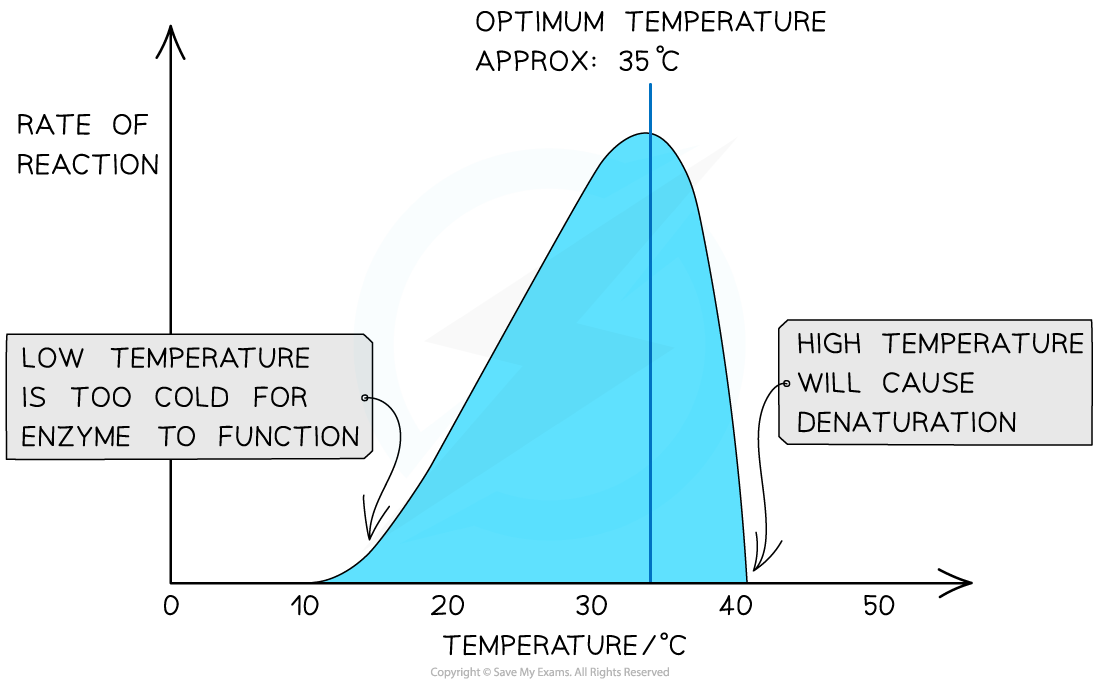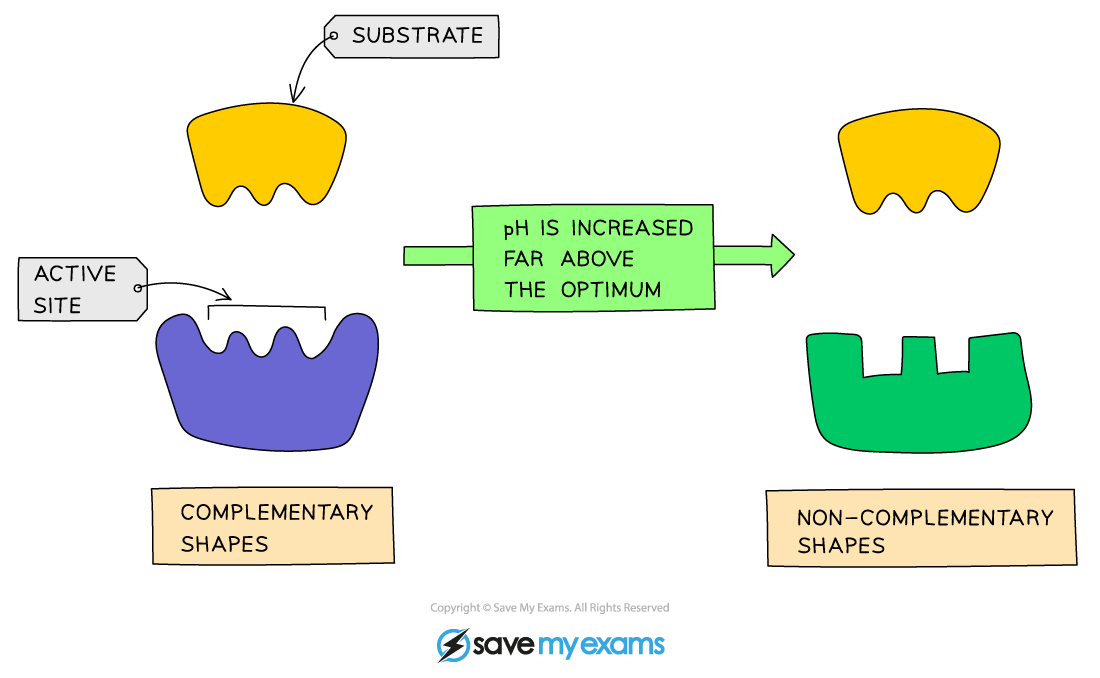Factors Affecting Enzyme Activity (SQA National 5 Biology): Revision Note
Exam code: X807 75
Temperature & enzyme activity
Enzymes work fastest at their optimum temperature
The optimum temperature for enzymes that function inside the human body is around 37 °C
Heating enzymes to high temperatures will break the bonds that hold the enzyme together, and the shape of the active site changes
The enzyme is said to have denatured
Substrates cannot fit into the active site of denatured enzymes, so the reaction will stop
Denaturation is irreversible; once enzymes are denatured, they cannot regain their shape

Plotting reaction rate against temperature
The rate of enzyme-controlled reactions increases with temperature until the optimum is reached
Above the optimum, high temperatures denature the enzyme, so the rate drops sharply to zero

pH & enzyme activity
Enzyme function is affected by the pH of the surrounding environment, e.g.:
enzymes that function inside cells work best at or near neutral pH (around pH7), because the cytoplasm’s conditions are close to neutral
enzymes that function in acidic conditions, such as the stomach, have a lower optimum pH
enzymes that function in alkaline conditions, such as the small intestine, have a higher optimum pH
If the pH is too high or too low, the bonds that hold the enzyme together can be broken
This changes the shape of the active site, so the substrate can no longer bind to it, reducing the rate of activity

Plotting reaction rate against pH
The rate of enzyme-controlled reactions increases as the pH approaches its optimum, and is at its highest at the optimum pH
Above the optimum, extreme pH denatures the enzyme, so the rate drops sharply to zero


Unlock more, it's free!
Did this page help you?